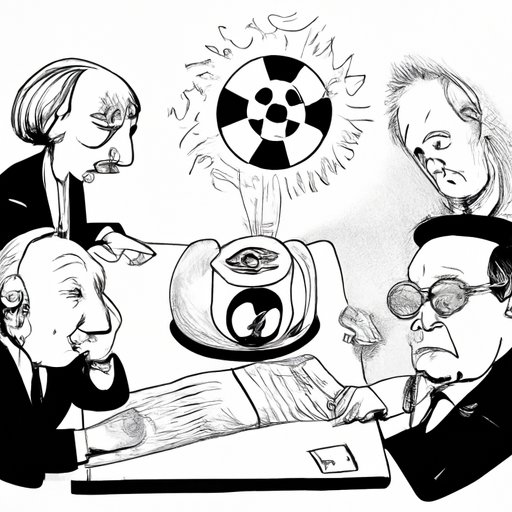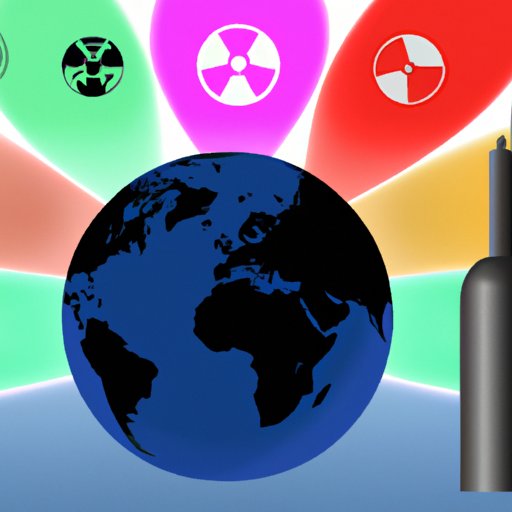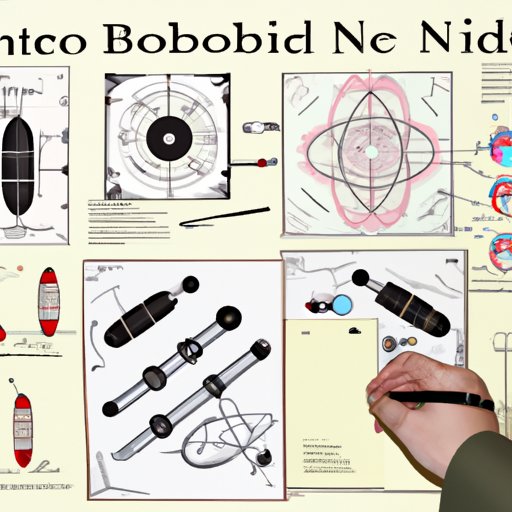Introduction
The invention of the nuclear bomb changed the course of history forever. A nuclear bomb is a weapon of mass destruction that utilizes the energy released from splitting atoms in a process known as nuclear fission. This article will explore the history of the invention of the nuclear bomb, the people behind it, and the global implications of its development. It will also examine the technical aspects of the invention.
Historical Timeline of Nuclear Bomb Invention
The invention of the nuclear bomb was a long and complex process that began in the early 1900s with research into atomic theory. In 1939, Albert Einstein wrote a letter to President Franklin D. Roosevelt warning him of the potential of creating an atomic weapon. This led to the launch of the Manhattan Project, a top-secret program to develop an atomic weapon. After several years of research and development, the first successful test of an atomic weapon took place on July 16, 1945 in Alamogordo, New Mexico. This test marked a major milestone in the development of the nuclear bomb.
Following the success of the atomic bomb, scientists began researching ways to create even more powerful weapons using nuclear fusion. In 1952, the United States conducted the first successful test of a hydrogen bomb, which is many times more powerful than an atomic bomb. This marked the beginning of the nuclear arms race between the United States and the Soviet Union.

The People Behind the Invention of the Nuclear Bomb
The invention of the nuclear bomb was the result of decades of research and development by scientists, military leaders, and political leaders. Scientists such as Albert Einstein and J. Robert Oppenheimer played a key role in developing atomic theory and pushing for research into the creation of an atomic weapon. Military leaders such as General Leslie Groves oversaw the development and testing of the atomic bomb. Finally, political leaders such as President Franklin D. Roosevelt and Harry S. Truman made the decisions about whether or not to pursue the development of the atomic bomb.
How the Nuclear Arms Race Impacted the Invention of the Nuclear Bomb
The nuclear arms race between the United States and the Soviet Union was a major factor in the invention of the nuclear bomb. During the Cold War era, both countries engaged in a competition to build the most powerful weapons. This led to an increase in the number of nuclear weapons developed and tested, culminating in the creation of the hydrogen bomb. The proliferation of nuclear weapons during this period had major implications for the global balance of power.

The Global Implications of the Invention of the Nuclear Bomb
The invention of the nuclear bomb had far-reaching global implications. The fear of nuclear war and the threat of mutual destruction led to increased tensions between the United States and the Soviet Union. This ultimately resulted in the signing of international treaties such as the Non-Proliferation Treaty, which aimed to limit the spread of nuclear weapons.
In addition, the invention of the nuclear bomb has had long-term implications for global security. The possibility of nuclear war remains a major concern, and the use of nuclear weapons is still seen as a last resort in the event of a conflict. As a result, the development of nuclear weapons has been closely regulated and monitored by international organizations.

Exploring the Technical Aspects of the Nuclear Bomb Invention
The invention of the nuclear bomb required a deep understanding of the science behind atomic theory and nuclear fission. The design of the atomic bomb relied on the principles of nuclear fission, which involves splitting atoms to release energy. The components of the hydrogen bomb were based on the principles of nuclear fusion, which involves combining atoms to release even greater amounts of energy.
The detonation of a nuclear weapon requires precise timing and coordination. The effects of a nuclear detonation can be devastating, and the use of nuclear weapons is generally considered to be a last resort in wartime. As a result, the development and deployment of nuclear weapons is closely monitored and regulated by international organizations.
Conclusion
The invention of the nuclear bomb was a major milestone in human history. It marked the beginning of a new era of global power dynamics and ushered in a period of intense competition between the United States and the Soviet Union. The invention of the nuclear bomb also had far-reaching implications for global security, leading to the creation of international treaties and regulations governing the use of nuclear weapons. Finally, the technical aspects of the invention of the nuclear bomb are complex and require a deep understanding of atomic theory and nuclear fission.
(Note: Is this article not meeting your expectations? Do you have knowledge or insights to share? Unlock new opportunities and expand your reach by joining our authors team. Click Registration to join us and share your expertise with our readers.)
